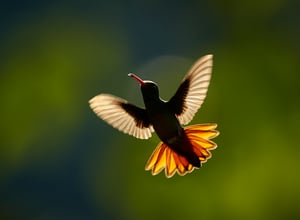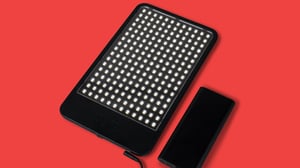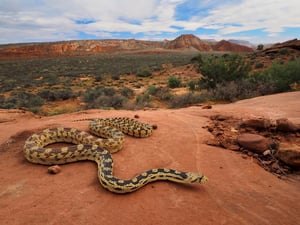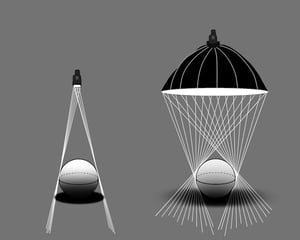If you asked me what my least favorite sort of light is for wildlife photography, it would be midday sun. When the sun is high in the sky, all sorts of problems occur. You get harsh shadows on the animals, harsh light in the background (translating to distracting bokeh), reduced...
Lighting Tag Archive
What Is Good Light in Wildlife Photography?
"I wish you good light" - or simply, "good light!" - is a traditional greeting among photographers. But what does it really mean? Every time that I hear this familiar phrase, it makes me think about what exactly my fellow photographer is trying to say. Are they wishing for lots...
One Way to Take Better Light Painting Photos at Night
If you’ve ever tried light painting for Milky Way photography, you may have run into some frustrating issues. Maybe your light’s color temperature didn’t match the scene, or the shadows and highlights somehow looked artificial. Or, perhaps you got a spotlight effect that didn’t cover a wide enough area.
Zhiyun’s X100 and G60 Review: Mini Lights with Power
There has been a lot of great innovation in the continuous lighting space recently. I recently got the opportunity to check out two of Zhiyun’s newest lights: the G60 (a 60-watt capable cube) and the slightly larger X100. Are these lights worth adding to your kit? In this short review,...
Assembling a Lightweight Lighting Kit for Photography
In many photographic genres, it's important not only to have powerful lighting gear, but also to minimize the gear's weight and keep it portable! Old-school lights were pretty hefty, but thankfully, advancements in batteries and LED tech have made it more practical than ever to build a lightweight lighting kit....
Photography Lighting Setups Explained: A Beginner’s Guide
Light is everything in photography. It might be a cliché, but without light, there would be no image! Sometimes, you’re dependent on natural light; other times, you’ll have more control. In this article, I’ll explain a variety of lighting setups – from modifying natural light, to adding your own lights to a scene.
Natural vs Artificial Light in Photography
Light is the most important part of photography, period. The nature of the light you capture has a fundamental impact on how your photo turns out. Good light can make a photo portfolio-worthy, while poor light can ruin even the most careful composition. But what makes light good in the first...
Free the Light – Use Off-Camera Flash!
Flashes, as most of us know them, are small devices that are designed to fit into a camera’s hot shoe. They have a mounting foot on the bottom for that exact purpose – you slide it on, secure it, turn on the flash, and shoot. But more often than not, the results this way are disappointing.
What Are Diffusers in Photography? (And How to Use Them)
A diffuser is a critical piece of equipment for flash photography. In terms of the quality of light, I’d even say that using a diffuser is more important than the flash you choose! In this article, I’ll answer all of your questions about using diffusers for flash photography and artificial light.
Sirui B25R Bendable RGB Light Review
Sirui’s new light, the B25R, literally puts a twist on traditional studio lights. The defining feature of the B25R - a constant, RGB strip light - is the ability to articulate and curve individual sections of the light to turn it into a wraparound source. Is this feature a must-have...









